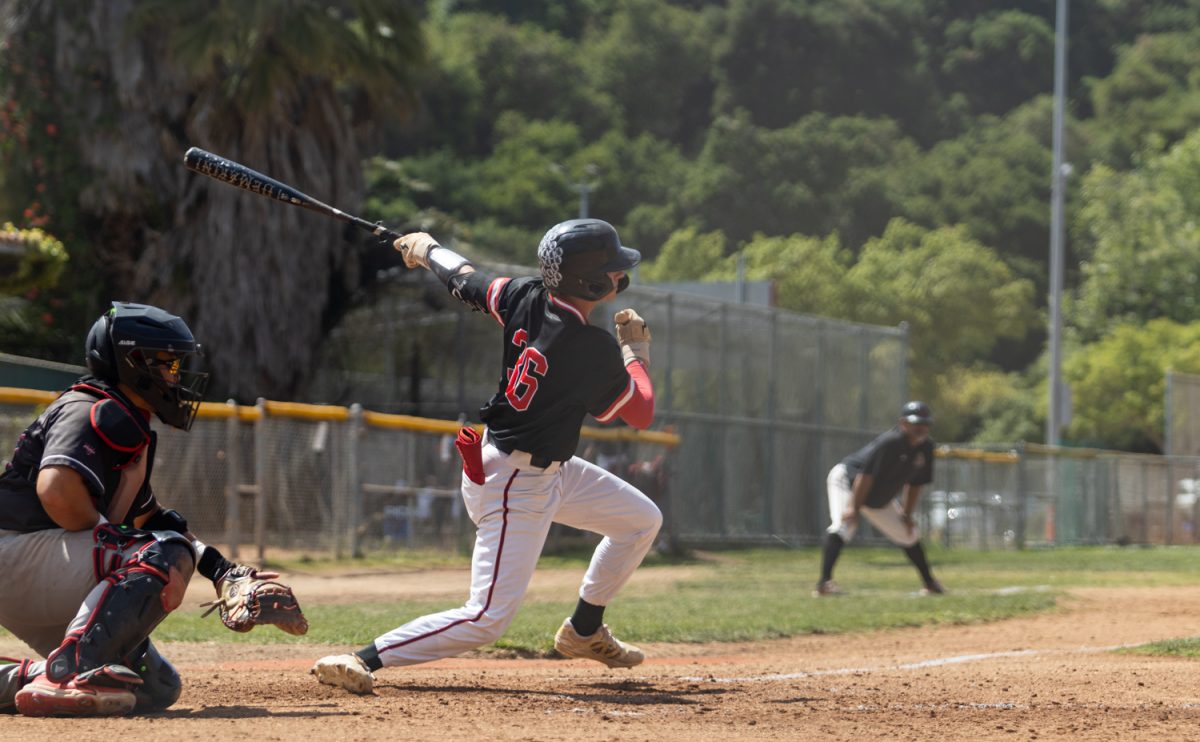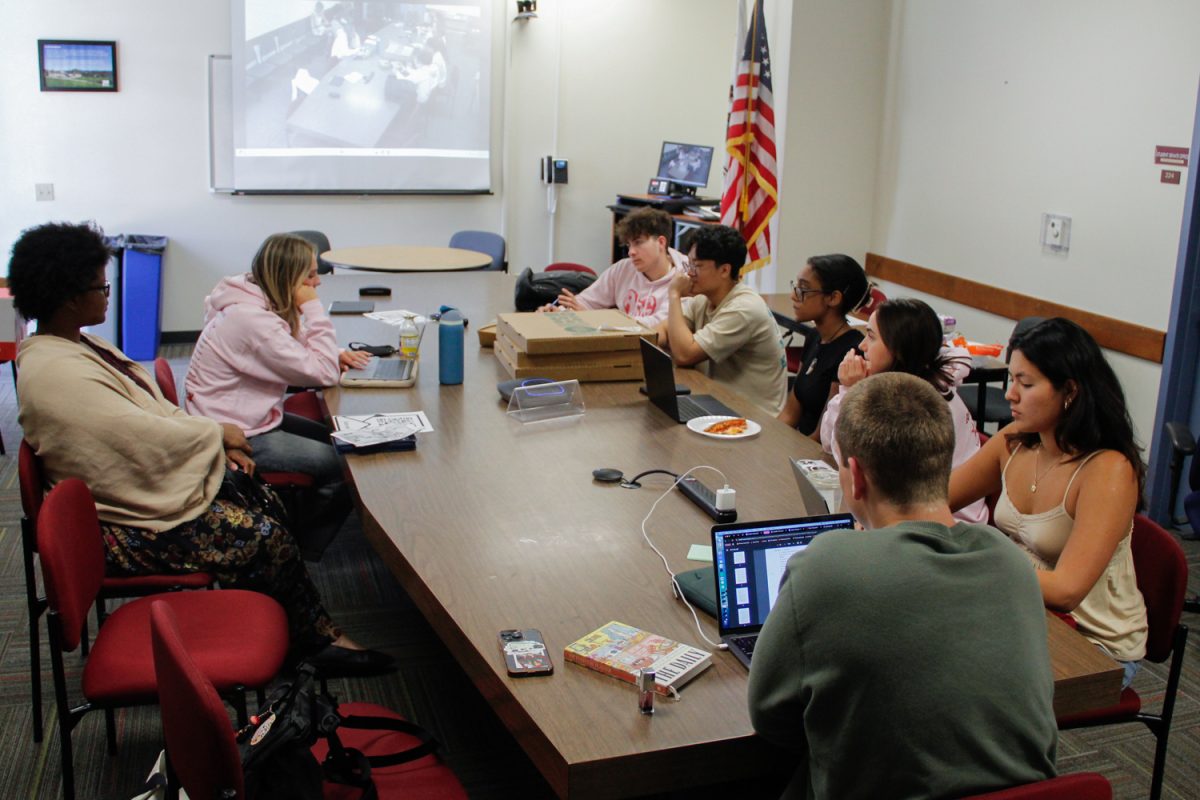The John Dunn Gourmet Dining Room did not have mushroom inside as it filled to capacity Monday with nearly 60 hungry diners ready to eat and learn about fungi.
Under the guidance of Chef Randy Bublitz, department chair of the School of Culinary Arts and Hotel Management, culinary arts students prepared multiple mushroom dishes for the seventh annual “March Mushroom Madness” on Monday, March 20. The sold-out event was a fundraiser for Santa Barbara Culinary Arts, a food professionals and enthusiasts group that provides scholarships and mentorship opportunities to culinary arts students.
“Tonight was very successful and I think it was one of the best MMMs done in all seven years,” said Karyn Yule, president of Santa Barbara Culinary Arts. “The students are great. There’s no better place or better person for them to learn from.”
Admission for the event was $65 and included dinner featuring an array of mushroom dishes, dessert and wine. Fungi and mushroom ingredients were donated by The Berryman, Inc., and included cremini, oyster, chanterelle, king oyster, white beech, brown beech and black trumpet mushrooms, as well as truffle honey and white truffle oil.
“We like to help the school,” said Jean-Pierre Jannet, general manager at The Berryman, Inc. “They have been our client for a long time.”
The Berryman, Inc. also donated two gift baskets filled with fruit, vegetables and truffle products for a raffle. Other donated raffle prizes included an orchid, wine and succulents.
The evening began with a talk from retired biology professor Robert Cummings, a mycology expert who also serves as a consultant for Cottage Hospital for mushroom-related medical issues.
“If anyone comes in with mushrooms [-related syndromes], they call Bob Cummings,” said Marilyn Zellet, board member for Santa Barbara Culinary Arts. “He’s an expert.”
According to Zellet, every year Cummings chooses a different topic on mycology to discuss.
“Mycology is a big subject,” Cummings said in an interview after his talk. “You can go any direction.”
This year Cummings gave his insight on hunting secrets and how to distinguish edible mushrooms from “false” toxic mushrooms that look like the edible ones.
“I would never tell you to eat a wild mushroom because it would ruin my entire day if you died,” Cummings joked.
Cummings said the key to distinguishing between an edible mushroom and a toxic look-alike is by judging the fungus using the five “S’s”: substrate, stature, spores, smell and staining.
“For every group it’s one combination of those characteristics,” he said. “If you’re gonna be a wild mushroom eater and collector, you really gotta do some homework.”
After learning about mushrooms, diners were ready to eat, and a line of culinary students brought out trays of dishes each prepared with at least one mushroom ingredient. Students began preparing dishes as early as noon Monday, and Bublitz and Chef Roberto Lopez came into the kitchen as early as 6 and 7 a.m.
“I was really interested in learning more about mushrooms,” said Noemie Chouinard, a first semester culinary arts student. “I just learned how to cook with it more.”
Culinary arts students are required to complete a minimum of 27 hours of catering each semester, and the event was one of the options students could sign up for.
Mushroom dishes included a cheese board with truffle honey, risotto con funghi, venison and wild mushroom ragout, salmon en croute with black trumpet mushrooms, chicken ballotine with morels, pied de cochon with chanterelle dijon demi-glace, truffle mashed potatoes and sauteed oyster mushrooms with asparagus salad.
“Everyone single one of the dishes was pretty exciting [and] labor intensive,” Lopez said.
According to Lopez, the pig’s feet was braised for six to seven hours, and the venison was braised for four hours.
If diners still had room in their tummies, cookies, cake bars and chocolate truffles were served for dessert.
“The students come up with the most incredible dishes,” said Gretchen Hewlett, chief development officer for the SBCC Foundation and board member for Santa Barbara Culinary Arts. “Everyone is so pleased to eat their talent. The Berryman gives ingredients they wouldn’t ordinarily cook with. The end product is just incredible dishes.”


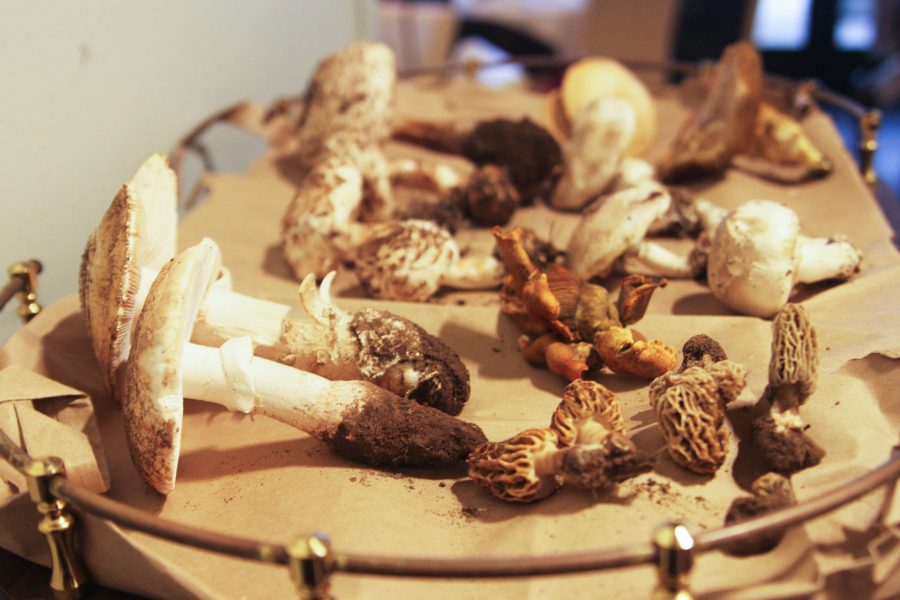



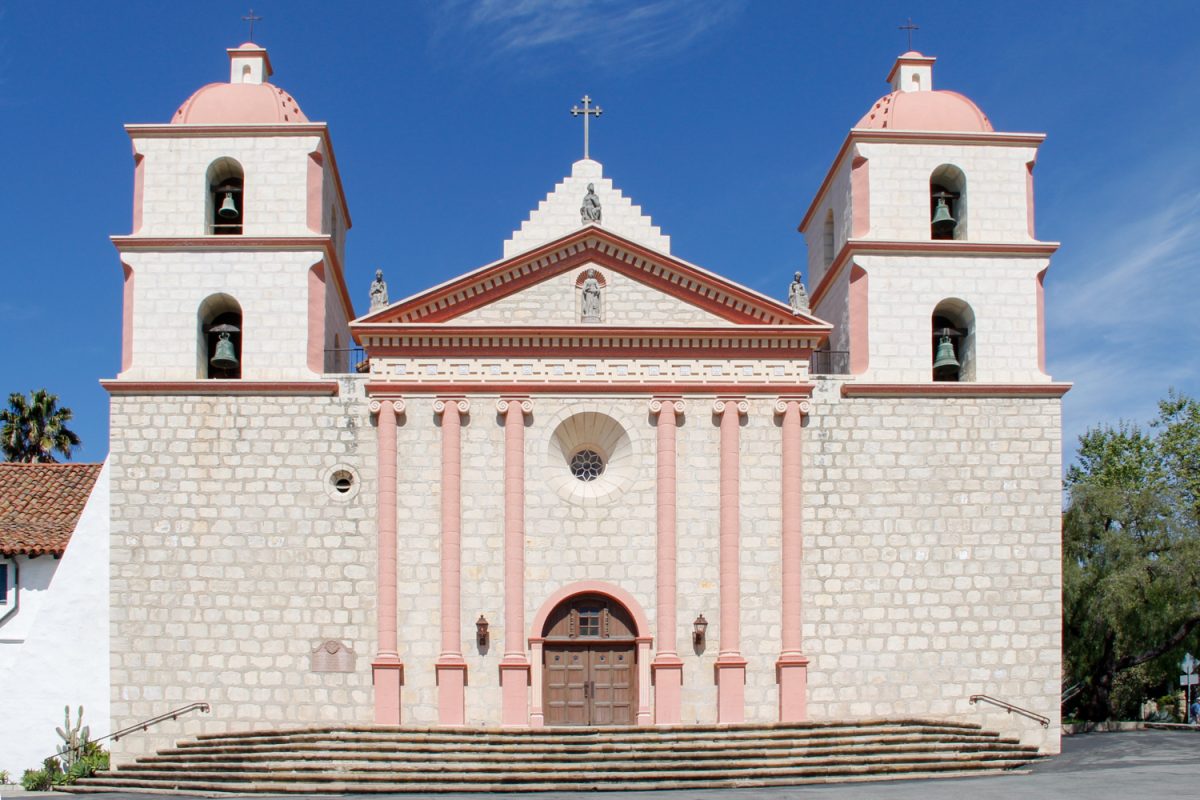

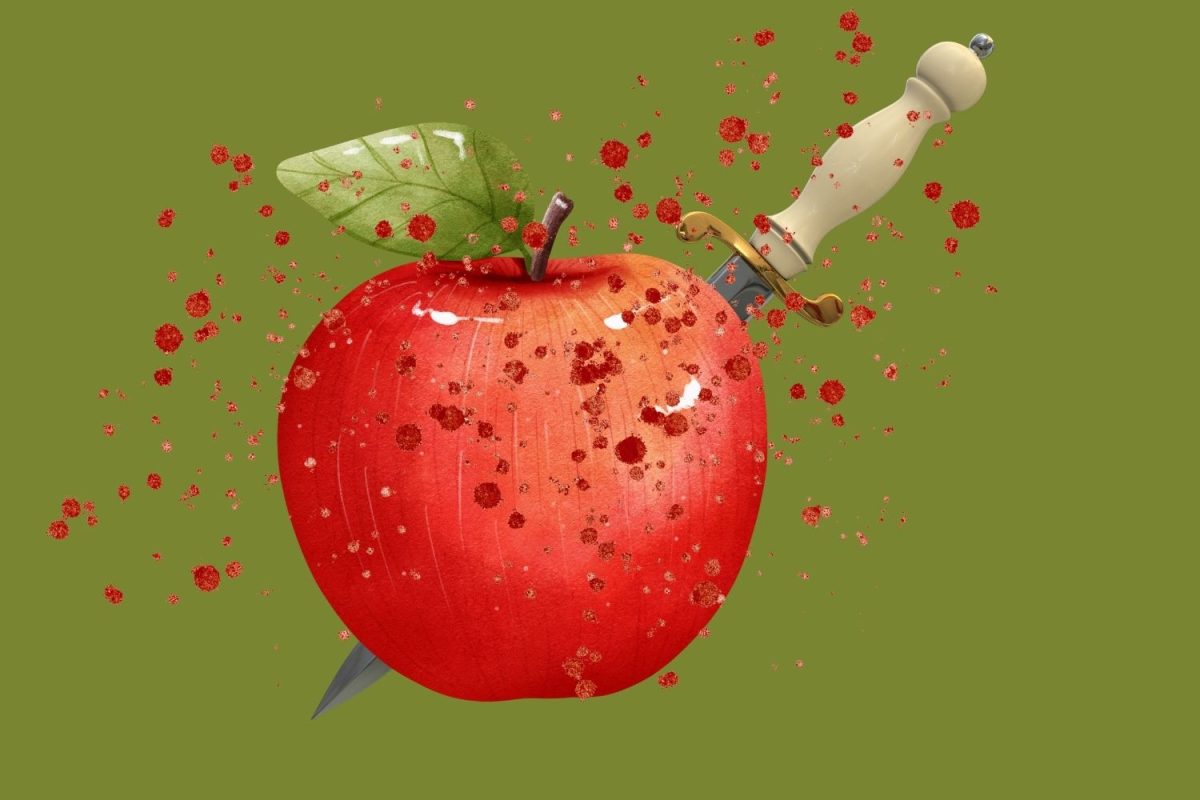


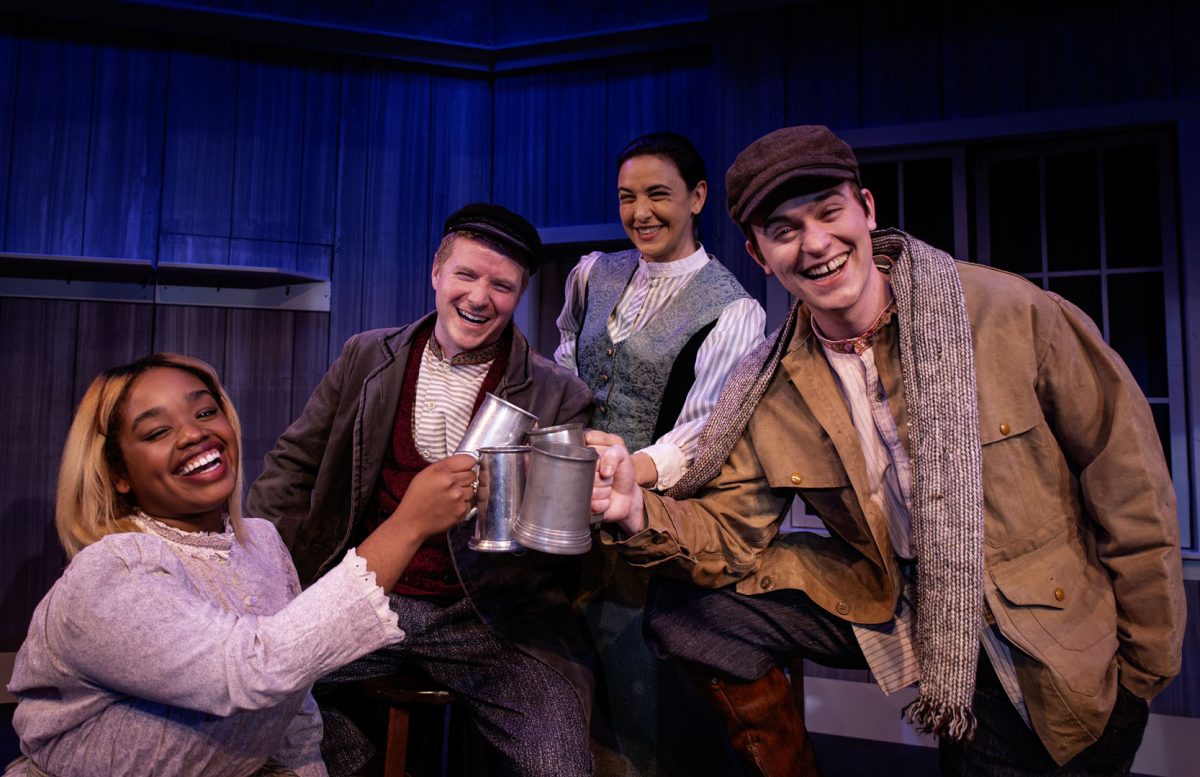
![Ken Watts uses the cable chest press machine on April 9 in Santa Barbara, Calif. "[What] people value the most in personal training is accountability," Watts said.](https://www.thechannels.org/wp-content/uploads/2025/04/MGSWatts-3-1200x800.jpg)
